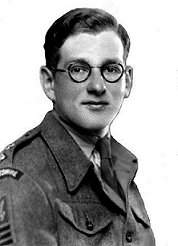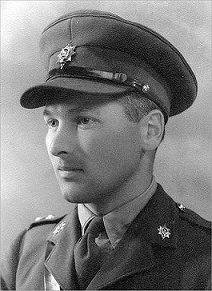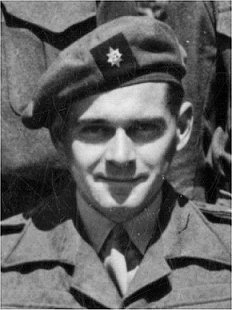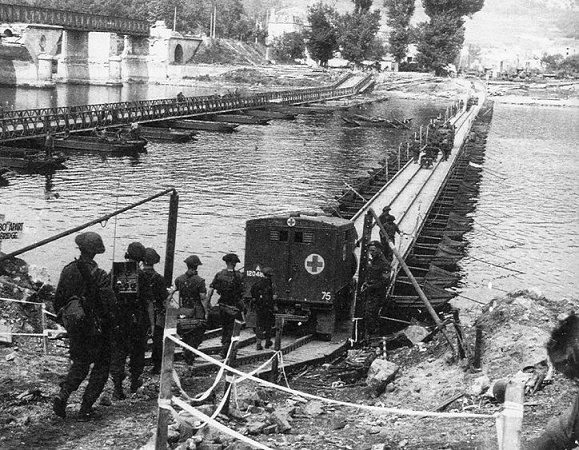1st Battalion Worcestershire Regiment - North West Europe 1944
VERNON - The River Seine Crossing (25th to 28th August 1944) - Part 8
Worcestershire Regiment Consolidate Position (28th August 1944)
The next morning, 28th August, was fine and sunny. Ration parties despatched to a rendezvous on the main road to carry back boxes of compo were heartened to see a steady stream of infantry and armour moving forward along the original axis.
Some of Worcestershire casualties had lain out on the hill-side during the night in no-man’s land. They were now quickly brought in and attended to, though some of them had already had their wounds dressed by the enemy before they pulled out.
Captain Bryan Elder (‘D’ Company) recalls: “The next morning (28th August) the C.O. sent for me. I was ordered to investigate the position via the top of the escarpment. I should have gone back to my Company to get a fellow soldier as a lookout scout. I did not. I set off up the escarpment area through the woods along the top. After half a mile, I saw the whole of a German assault force formed up in line on the road about to come our way. I ran back to H.Q. to inform the C.O. and he rang H.Q. to arrange an artillery assault on the enemy’s position. Within minutes, the Heavens opened with our artillery bombarding the position of the enemy’s assault force. When it was quiet, I went back to the top of the escarpment and suddenly discovered white shirted Germans crawling up around me, so I took cover behind a log store and I considered that I was cornered and seriously considered surrendering, as I was on my own and had nowhere to go. Then suddenly, out of the wood appeared a fellow Officer who said he was a Canadian Officer (Lieutenant Johnnie Davies) attached to our Unit, and he had not come all the way to give himself up and suggested we both threw grenades at the enemy and run back to the next hedgerow about 200 yards back where he believed his Company were in position.I never ran so fast, and we both made it. One of the Officers in this |
Field Ambulance crosses over the Class 9 Bridge to Vernonnet (IWM BU185) |
Company who had joined the Unit when I did, and was red faced like myself stood up encouraging his troops to fire back at the enemy, and was shot dead (Captain Roger Miller) which led to a rumour that I had not survived very long. I made my way back to my Company very relieved, very tired and exhausted. The next day, I had the satisfaction, if that is the right word, of seeing the remains of the German assault force with vehicles and artillery smashed to pieces on the roadside.”
Lieut. 'Benny' Goodman recalls: “When I arrived at 214 Brigade Tac H.Q. just short of the Seine, the guns of all three Field Regiments - 94, 112 & 179 were firing in harness - a deafening row. Then ahead of me an artillery spotter plane was shot down by enemy gun fire over the Seine.
I was welcomed by the Brigade Staff Captain John Denison (later to be DAA & QMG and later in civilian life Administrator at the Festival Hall in London) who said ‘You have come to the wrong place. You should have gone to ‘B’ echelon.’ At the time the 1st Battalion Worcestershire Regiment were still under command of 129 Brigade for the four Battalion crossing of the Seine. I then had to wait until Brigadier Essame returned to find out what I had to do next.
About half an hour later the Brigadier together with a liaison officer drew up in a scout car back from the scene of battle. They were covered from top to toe in dust and mud. This was my first meeting with the Brigadier. He was a trifle angry. Why? Because one of his battalions, the 1st Worcestershire, had been taken from him for the crossing and placed under the command of 129 Brigade. True it was just about to come back again, but the rivalry between the two brigadiers was all too clear.
The next day the Brigadier said ‘get a motorcycle from the MT sergeant, take a map and a torch, cross the Bailey Bridge now in position and find the Worcesters and the Somersets - they should be there...and there. ....and report back to me.’
When I arrived at the other side of the bridge to my joy I saw a Worcestershire Cap Badge – Sergt. Jim Norton - who warmly greeted me. I then moved further up the road to the Worcesters who I found exactly as I had expected, and in the process met Major ‘Doc’ Watson and Captain Wally Leadbeater.
I then went off to find the 7th Somersets. This turned out to be a quite different story. The map was excellent but as I drove further and further into the woods still no sign. Only later did it emerge the Somersets had advanced far too far, one company had been surrounded and captured, including one young officer who only days earlier had travelled with me from Southampton.
The woods were thick and silent. I was alone; I was a sitting target for any German sniper hidden in the undergrowth. Was I frightened? I was petrified. I then heard the sound of tanks - I hurled the motor cycle into the vegetation .... and waited.
The tanks stopped almost opposite me, just a few yards away. To my relief came the voices of officers with marked public school accents - Eton or Harrow maybe? To their utter surprise I emerged from the undergrowth. ‘Seen the Somersets?’ I asked. ‘No’ came back the reply ‘I should go back to Brigade H.Q. if I were you before it gets too dark in these woods.’ I did!”
It was around this time that Lieut. H. H. H. ‘Jimmy’ James injured his leg after falling during enemy mortar fire. Lieut. Benny Goodman was to replace him as the Worcestershire liaison officer with 214 Bridage and take on his batman Arthur Tolley.
Note: Lieut. Benny Goodman later became Camp Commandant at 214 Brigade HQ. It was at Brigade HQ that he was first called Benny (after the famous Jazz Band Leader) - a nickname that stuck with him throughout his army career.
 |
 |
 |
Lieut. D. C. 'Benny' Goodman |
A/Major D. Y. 'Doc' Watson |
Lieut. H. H. H. James |
At mid day on the 28th August 1944 the 1st Battalion Worcestershire Regiment received orders to proceed back to the bank of the river and relieve 5th D.C.L.I. in the village of Pressagny L’Orgueilleux. The relief was completed by 15.00 hours. The Cornwalls, who had held a determined counter-attack on the village the previous night, were sunning themselves and preparing for an attack that afternoon on another village to the north-east called Panilleuse.

